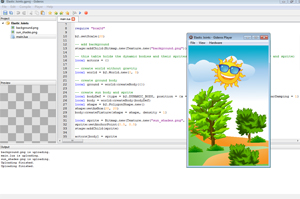

Oracle BI Answers supports drill-down on these hierarchical columns. Note that you can also expose dimension hierarchies by adding one or more columns from each hierarchy level to a subject area in the Presentation layer. See "Working with Presentation Hierarchies and Levels" for more information. Creating hierarchies in the Presentation layer enables users to create hierarchy-based queries. You can expose logical dimensions to Oracle BI Answers users by creating presentation hierarchy objects that are based on particular logical dimensions. Additionally, each cube in the data source should have at least one dimension and one measure in the Business Model and Mapping layer. A dimension is specific to a particular multidimensional data source (it cannot be used by more than one) and cannot be created and manipulated individually. For example, you do not create dimension level keys.
#Gideros get logical dimensions series
Oracle Business Intelligence also supports a special type of level-based dimension, called a time dimension, that provides special functionality for modeling time series data.īecause dimensions for multidimensional data sources are defined in the source, they do not require as much work compared with dimensions in other data sources. In parent-child hierarchies, members all have the same type. Level-based hierarchies are those in which members are of several types, and members of the same type occur only at a single level. There are two types of logical dimensions: dimensions with level-based hierarchies (structure hierarchies), and dimensions with parent-child hierarchies (value hierarchies). It also provide the metadata that the Oracle BI Server uses to drill into and across dimensions to get more detailed views of the data. This structure represents the organization rules and reporting needs required by your business. In each dimension, you organize logical columns into the structure of the hierarchy. Note that dimensions exist in the Business Model and Mapping (logical) layer and in the Presentation layer. Common dimensions might be time periods, products, markets, customers, suppliers, promotion conditions, raw materials, manufacturing plants, transportation methods, media types, and time of day. One or more logical dimension tables can be associated with at most one dimension object. You can combine them however you want and in the way that is more practical or makes more sense to you.In the Business Model and Mapping layer, a dimension object represents a hierarchical organization of logical columns (attributes).
#Gideros get logical dimensions how to
Pretty simple, yet super powerful to understand how to use these logical operators.

I have this simple table that I’ll use asan example: Let’s do a few tests to see how these operators work. You’ve probably seen them sometime in DAX or in the Excel formula language and some of those are:īut how do you write them in the Power Query formula language? we already know that we can only use them inside a Custom Column, but how will that look like? Logical Operators in Power BI / Power Query

In this post we’ll go over the available conditional operators and how to do Nested IFs in Power BI / Power Query. In the previous post I showed you guys how to create a conditional column in Power BI / Power Query using the UI and then just using the Power Query Formula language.


 0 kommentar(er)
0 kommentar(er)
